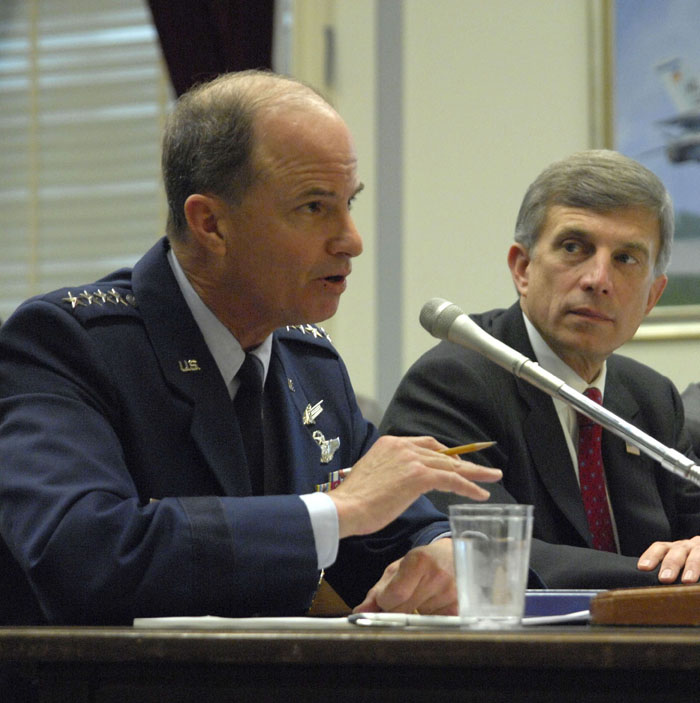 A key question for most lawmakers at Friday’s House Armed Services Strategic Forces Subcommittee hearing was whether the Air Force has made any progress in reining in cost and schedule problems on new space systems. Panel Chairwoman Ellen Tauscher (D-Calif.) noted that over the past decade the “national security space community has been struggling to develop and field a new generation of systems,” many of which “have been plagued by inaccurate cost estimates and optimistic predictions of technical maturity.” Tauscher challenged Air Force Undersecretary Ronald Sega and Gen. Kevin Chilton, head of Air Force Space Command, to respond to concerns that the “space acquisition system is broken.” Sega acknowledged in his written testimony that the Air Force’s “back to basics” approach, which will use a “block,” or incremental, acquisition strategy to fielding space systems, “is not a quick-fix solution to space acquisition.” However, both he and Chilton believe that the approach is beginning to reap dividends. Chilton, in noting the link between “over-optimistic estimates of the maturity of key technologies” and past failures, asserted “Our block development approach changes that.”
A key question for most lawmakers at Friday’s House Armed Services Strategic Forces Subcommittee hearing was whether the Air Force has made any progress in reining in cost and schedule problems on new space systems. Panel Chairwoman Ellen Tauscher (D-Calif.) noted that over the past decade the “national security space community has been struggling to develop and field a new generation of systems,” many of which “have been plagued by inaccurate cost estimates and optimistic predictions of technical maturity.” Tauscher challenged Air Force Undersecretary Ronald Sega and Gen. Kevin Chilton, head of Air Force Space Command, to respond to concerns that the “space acquisition system is broken.” Sega acknowledged in his written testimony that the Air Force’s “back to basics” approach, which will use a “block,” or incremental, acquisition strategy to fielding space systems, “is not a quick-fix solution to space acquisition.” However, both he and Chilton believe that the approach is beginning to reap dividends. Chilton, in noting the link between “over-optimistic estimates of the maturity of key technologies” and past failures, asserted “Our block development approach changes that.”
F-35As from the Vermont Air National Guard have deployed to Puerto Rico in recent days, continuing a major buildup of U.S. Air Force assets in Latin America aimed at combating drug trafficking and pressuring the regime of Venezuelan leader Nicolas Maduro.

